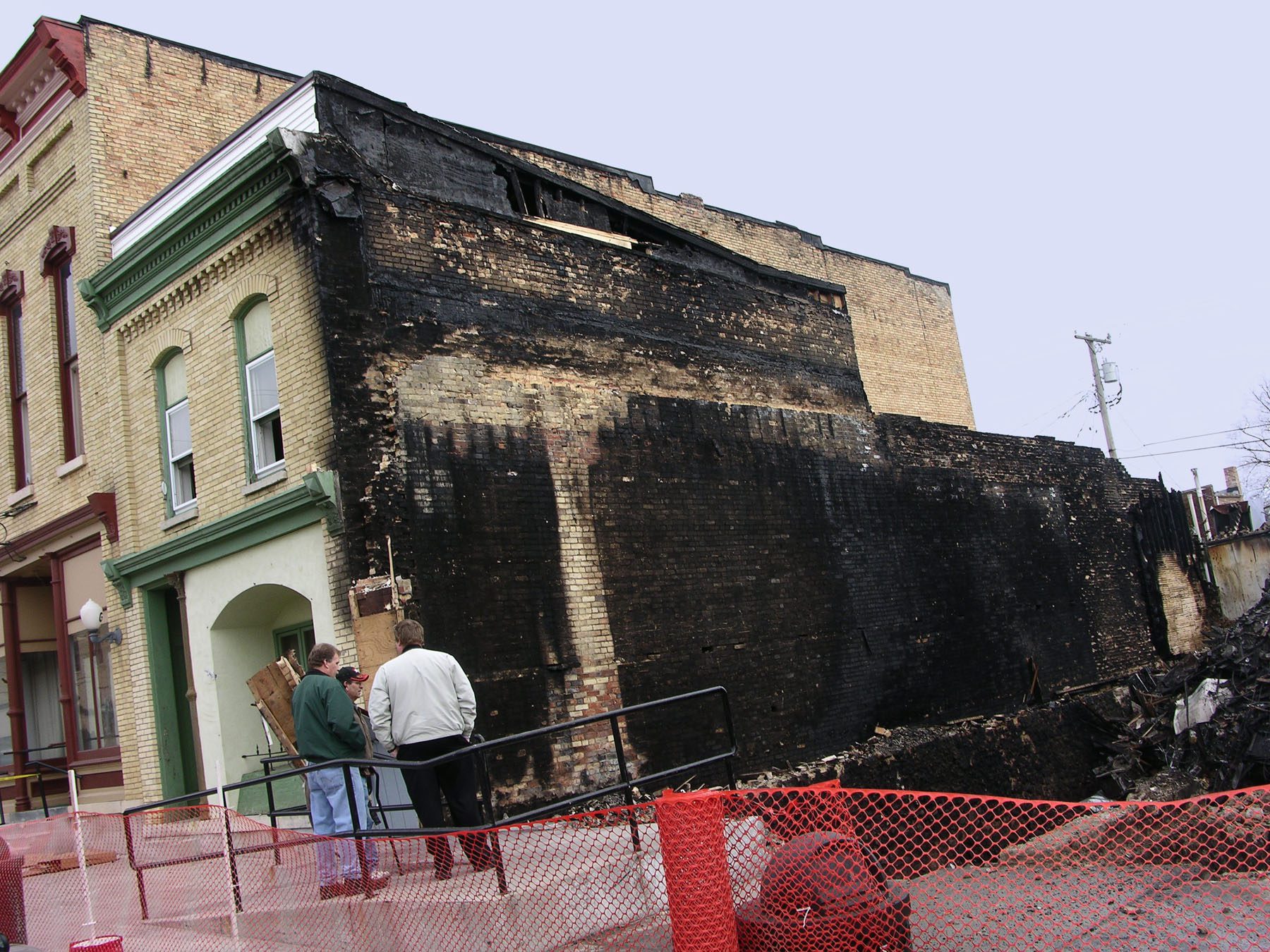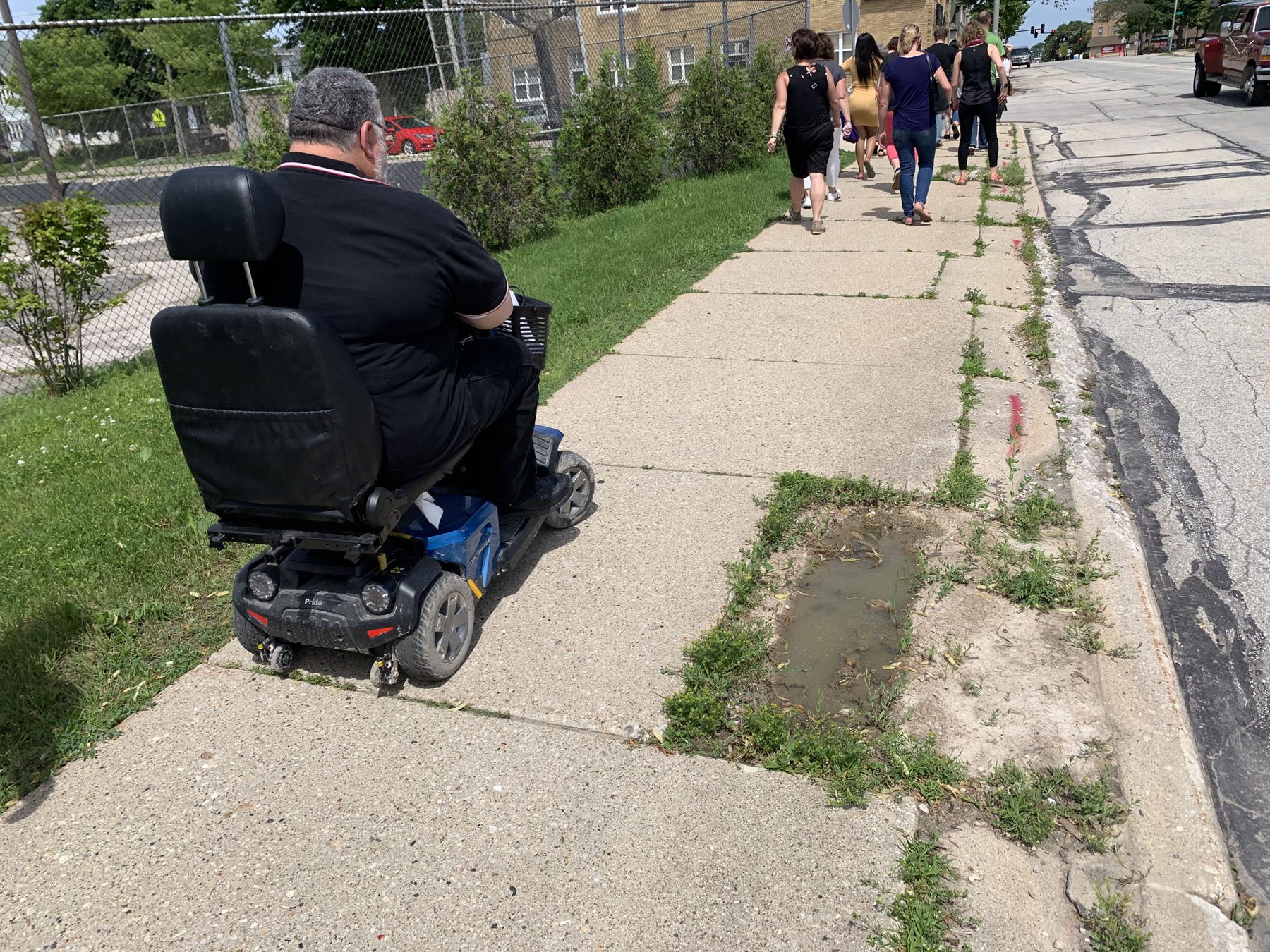
Just like any vehicle, all buildings—whether they are residential or commercial, new or existing—require regular maintenance.
The law says we need to keep our vehicle headlights, blinkers and mirrors in working order for the safety of others. Similarly, there are laws in place that require owners of commercial properties to make their buildings as safe and accessible as possible for all users.
These improvements, whether for vehicles or properties, require investments of time and money and are not always easy on our budgets. But they can help to maintain the value of our home or auto for years to come.
Since the Americans with Disabilities Act (ADA) was passed in 1992, owners of commercial properties have been required to make accessibility improvements whenever it’s “readily achievable”—financially and structurally—to do so, even when no other renovations are planned. And building codes have required many accessibility improvements—such as ramps, elevators and accessible toilet rooms—when other renovations are being done.
For fire safety, protections such as fire extinguishers and exit lights are required even when no other building improvements are planned. More in-depth upgrades, such as sprinklers and fire-rated walls, are often triggered by changes in building occupancy or by building renovations.
The difference between accessibility and fire safety regulations is that there have long been incentives in place to make accessibility upgrades more affordable and achievable. But there haven’t been similar means to offset the costs of fire safety upgrades. Thankfully, that is changing, though only temporarily. So, time is of the essence. Here is a detailed overview of a recently created but temporary tax incentive for sprinkler installation, as well as a summary of the existing incentives for accessibility upgrades.
New (and temporary) tax incentive for sprinkler installation
After the tragic 2003 nightclub fire in Rhode Island, the National Fire Sprinkler Association (NFSA) began lobbying for a way to make it more affordable for businesses to equip their buildings with sprinklers. Finally, in 2017, as part of the Tax Cuts and Jobs Act (TCJA), a new tax incentive was created.
This incentive allows business owners to write off the cost of fire sprinkler installation. Originally set at $1 million per business per year, the CARES (Coronavirus Aid, Relief and Economic Security) Act recently increased it to $1.04 million to account for inflation. These sprinkler systems are considered “equipment” in section 179 of the tax code.
The problem is: It was only created as a five-year program, and during the first four years, most small businesses were unaware of it. Plus, a loophole made larger businesses ineligible, so high-rise commercial buildings, for example, could not take advantage of the provision. As part of the recent CARES Act, that loophole has been closed, but sadly, it will start to be phased out after 2022.
Thanks to the CARES Act, though, deductions can be taken retroactively. This means sprinklers put into use between Sept. 27, 2017, and Jan. 1, 2023, are eligible.
In addition, after 2022, the program doesn’t completely go away. It starts to phase out over another four years, and by 2027, will be permanently set at a 15-year depreciation rate. This is still an improvement from the previous 39-year depreciation rate that was in effect before the TCJA and CARES Act changes.
- 2023—bonus depreciation is 80% of the cost of property placed in service in 2023
- 2024—60%
- 2025—40%
- 2026—20%
- 2027—The depreciation schedule is permanently set at 15 years.
Find more information on this incentive.
Since the cost of sprinklers is such a major issue in Main Street communities, outreach and marketing efforts in this final year of the incentive are vital, and are recommended to begin immediately in your community.
Incentives and caps for accessibility Improvements

When accessibility improvements are required in existing buildings as part of a larger renovation project, there is a “disproportionality rule” in place to keep the costs reasonable for the owner. This rule states that an owner only needs to spend 20% of the total alteration cost on providing an accessible route to the altered area. For example, in many cases, the cost of installing an elevator would be more than 20%, so installing an elevator would not be required. But in lieu of the elevator, other accessible features and elements must be installed to make up the 20%. These include, in order of priority:
- Accessible entrance (including ramps, entry doors, etc.)
- Accessible route (including corridors, elevators, etc.)
- Accessible restrooms
- Accessible telephones
- Accessible drinking fountains
- Accessible parking, storage or alarms
It should be noted that this 20% is in addition to the total alteration costs. So, if your initial renovation costs were $100,000, you would need to spend another $20,000 on accessibility upgrades, for a total of $120,000.
The disproportionality rule only applies when doing a renovation project. But as mentioned earlier, business and property owners are required to make accessibility upgrades whenever readily achievable, even when no other renovations are being done. There are both federal tax credits and tax deductions available to business owners to help defray some of the cost of making these readily achievable improvements.
The first is the Barrier Removal Tax Deduction. This allows any business to deduct up to $15,000 per year for expenses incurred to remove accessibility barriers. Eligible expenses include providing accessible ramps, curb cuts, parking spaces, restrooms, telephones, drinking fountains, etc., as well as widening entrances and routes. This deduction cannot be used for new construction or for accessibility work already required as part of a renovation, and only applies to buildings constructed after Nov. 5, 1990.
There is also a Disabled Access Tax Credit. This tax credit is available to businesses with less than $1 million in gross receipts in the previous year, or businesses with 30 or fewer full-time employees. Eligible expenses are the same as the tax deduction, but also included are sign language interpreters, assistance for the blind, consultant services, Braille, improving website access, etc. The tax credit cannot be used for new construction or for accessibility work already required as part of a renovation, and only applies to buildings constructed after Nov. 5, 1990. The credit is 50% of expenditures over $250, not to exceed $10,250, for a maximum credit of $5,000 per year.
Some nonprofits, especially 501(c)3 entities that are social enterprises or other social good organizations, may be eligible for these federal ADA tax incentives. As always, it is recommended that you consult your accountant to determine such status and eligibility.
Find information on both of these tax incentives.
One of the most important things a small business/building owner can do is to fill out and continually update an ADA checklist. It identifies accessibility-related deficiencies in a building and lays out a plan for correcting the ones that are readily achievable. This can help immensely if the owners are ever sued for noncompliance. The checklist can be used to show they are making a good faith effort to make such improvements when resources allow.
In addition, the Great Lakes ADA Center is a great resource for accessibility-related information and technical assistance in the upper Midwest, including Wisconsin.
Community-driven assistance for code improvements
While property owners are ultimately responsible for maintaining their properties, communities can be proactive partners in helping to address common challenges facing the owners of existing and historic buildings. The case studies below highlight some examples of programs that have created a more welcoming and sustainable downtown environment.
Valley Junction neighborhood – Des Moines, Iowa
Knowing that connecting lateral water lines and standpipes to the city water main is a major part of any fire sprinkler project, the Valley Junction neighborhood of Des Moines created the Valley Junction Fire Sprinkler Infrastructure Project in 2009. It targeted two key blocks of the commercial district. They utilized a Main Street Iowa Challenge Grant for phase one, and city funding for later phases. They installed a lateral from the water main to the centermost building on the block. They then created a fire department connection, monitoring panel and control room in the center building. From there, they extended a vertical standpipe up to the ceiling level and installed horizontal runs into each building on the block from there. This reduced the costs of individual building sprinklers considerably for each property. View the 2009 RFQ from the City of Des Moines.
Great Bend, Kansas
In 2021, the City of Great Bend utilized $2.27 million of American Rescue Plan Act (ARPA) funds to assist in sprinkler system installation and other improvements to upper-floor loft developments. They defined an area of the downtown where underutilized upper-floor spaces were most prevalent. They then created a 50% matching grant, reimbursable upon proof of installation. They also offered a forgivable loan to cover the remaining 50%. To be forgivable, the property value (and thus property taxes) must increase a certain amount over 15 years for commercial space and 20 years for residential. Property owners must spend at least $50,000 on each structure in order to qualify.
Omro, Wisconsin
Downtown Omro had a block of buildings where the front entrances were all at different heights above the sidewalk. Making matters more complicated was the block’s location on a state highway with a relatively narrow sidewalk. Individual ADA-accessible ramps would not be feasible. So, the local Main Street program, Future Omro, worked with Wisconsin Main Street on a schematic design for a full-block ramp. They then worked with the city, the state Department of Transportation and local engineers on the final design. The City of Omro donated $25,000, and Future Omro and the Omro Business Improvement District provided $12,000. Omro Public Works employees donated their time to remove the old concrete sidewalk and steps (a $3,350 value). A local concrete company donated $4,200 worth of new concrete, while a local fabricator donated the $3,000 railing. Construction lasted from May through August, but property owners were kept abreast of the progress daily, and little disruption to businesses occurred.
